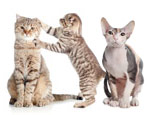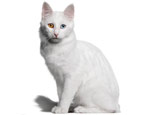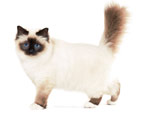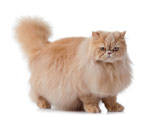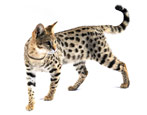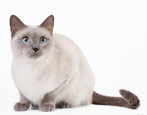Breeds of marble cats

The marbled color of cat hair is considered one of the most attractive. It is typical for animals of different breeds. Most often, the mustached representatives of the Bengal, British and Scottish Fold breeds are born in marble.
The beauty of these pets, without a doubt, makes them insanely popular. You can fall in love with them at first sight. Today we will analyze what characteristics marble cats of different breeds have.

Color features
In some cases, the beautiful marbled color of the cat's coat is called classic. This color is one of the varieties of the well-known tabby color.

It is worth making a small digression to understand what the concept of "tabby" means in determining the colors of animals. So, if a cat has an interesting color with spots or stripes, then this means that she is a carrier of the T gene (tabby). Such colors are found only in cats and most often in its wild subspecies.
All varieties of tabby colors have common external characteristics. These include the presence of thin stripes on the facewhich, like clear and contrasting contours, outline the upper and lower eyelids. As a result, a noticeable letter "M" appears on cats' foreheads.

Scientists claim that this unique print on the skin was found in the very first species of cats, which is why it is very often called wild.
If on the cat's hair they stand out peculiar noticeable stains (that is, large concentric or spiral-shaped circles are visible on the sides), and 3 parallel stripes stretch along the ridge line, there are rings on the legs, and there are specks on the abdomen, then such a catchy color is called marble or classic tabby.
Cats with a similar coat look very interesting. From the outside it seems as if someone took a brush and painted clear contrasting stripes on a neutral background, making the appearance of the animal truly beautiful and a little wild.
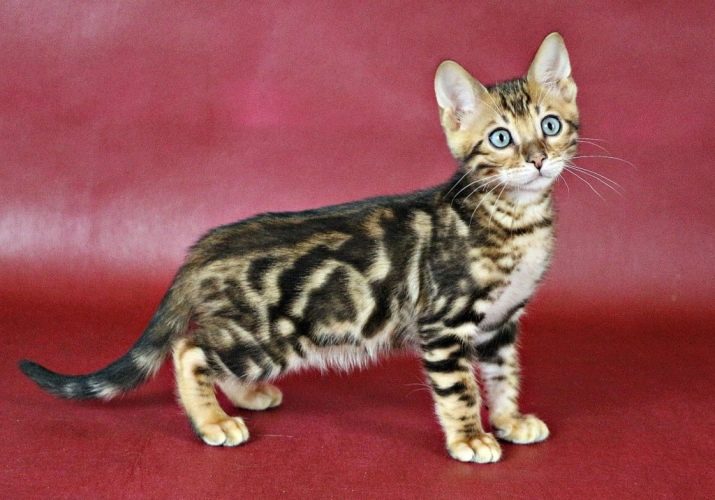
Views
Do not think that the marbled color is the one and only variant of the color of the cat's coat. There are several of its varieties, each of which differs in its own shades and patterns.
- Black marble - the color is characterized by charcoal stripes located on a dark brown background. The eyes and contours of the cat's nose are always clearly delineated with this coat color. Usually animals with this color have yellow, brown or orange eyes.

- Chocolate - this kind of marble color is one of the most charming. It features dark chocolate patterns on a light background. The stroke is always a deep brown in this color. In cats with this color, the iris of the eyes is the same as in the previous described case. The paw pads and nose of these animals have a characteristic brick shade.

- Cinnamon - another unusual marble color option. The background here is light honey, and the patterns on the wool, paw pads, eye and nose rims are colored in a shade of cinnamon. More often than not, fluffy wearers of this luxurious color have a yellowish iris.

- Red - red marble looks very bright and elegant on cat hair. Such an expressive coloring is characterized by a deep red pattern on a red background. The outline of the paws and pads is also bright red, but the eyes of the lucky owners of this chic color can have different shades - yellow or orange.

- Cream - delicate and original color of the coat, which is not very common. From the outside, it is a little similar to red marble, but differs in less catchy and saturated tones. All colors here will be more muted and calm.

- Blue - the main background with this kind of marbled color will be close to beige shades. The print on the wool and the outline on the cat's face are in this case blue or gray. The eyes of these cats and kittens will be brown or bright yellow. The paw pads are most often dark pink in color.
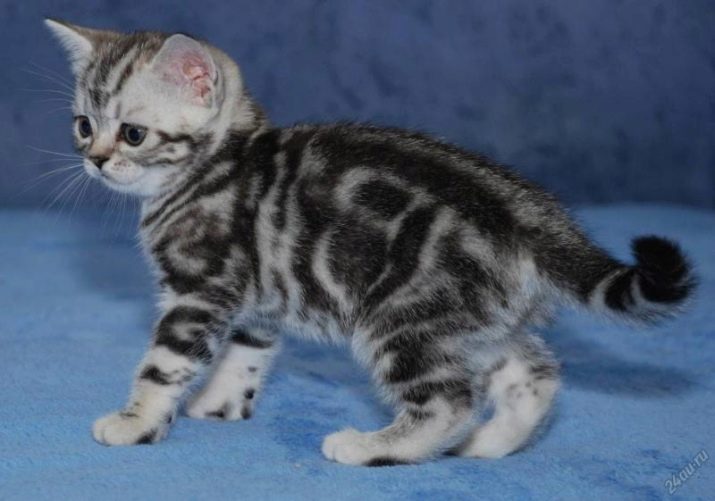
- Lilac - another truly amazing feline color. With it, a silvery shade acts as a basis against the background of patterns, and the patterns themselves and the outline of the nose are lavender. The paw pads of these pussies are pale pink, and the eyes are yellow or brown.

- Faun - this color provides for a pale yellow background, on which there are characteristic stains of the color of a fawn. The outline lines on the face and legs are pink, and the eyes have rich copper, brown, or orange hues.

Tortoiseshell - such marble looks especially interesting and unusual because it combines two colors in the background. For example, seals, whose tortoiseshell color combines lavender and peach, chocolate and red, or honey and red shades, look bright and expressive.

Breeds
A wide variety of cats and domestic cats can have a beautiful marble color. However, there are some individuals in which this skin color is more common. Let's get to know them better and consider which color option is typical for them.
Bengali
Bengal marble cats look very unusual and peculiar. In hybrid representatives of this well-known breed, shades such as gold, silver, snow, coal are most often traced in color.
The pattern in these individuals is always tabby. For this reason, their marble is called in another way "on silver", "on gold", coal or snow.
The version of the drawing on the Bengals may differ. Marble for such beauties can be of the "raincoat" or "sparble" type. In the case of a raincoat color, the pattern will be less noticeable and expressive. With it, dark stripes are practically buried in the general color background.
As for the sparkles, they are highly regarded. Their color can combine large contrasting two-color rosettes, as well as large circles on the sides.
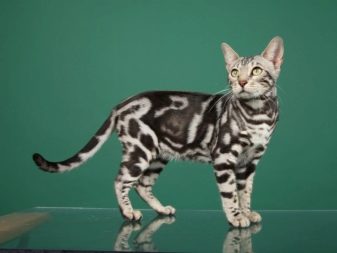

British
Delicate and elegant marble is very often found in the color of the British or Scottish cat. These species differ from each other only in the structure of the auricles. In the Scottish aristocrats, they are bent forward and directed downward.
This is one of the oldest European breeds. Its representatives are distinguished by a lazy and wayward character. They need a good upbringing. If you do everything right, these beauties make wonderful fluffy friends.


These seals have a marble color of regular or tortoiseshell. Representatives of these breeds often have difficulties in passing on a similar color to the offspring.
Asian tabby
The name of the breed here speaks for itself - I mean expressive Bengal-style color. Cats with this color are quite common. The described individuals are highly active. Such animals like to play a lot and behave like a hooligan. Cats very quickly get used to and become attached to their owner, while treating strangers with distrust.

American bobtail
Cats of this breed also boast a wide variety of colors. Marble color can be found in various variations.
Curvy, handsome Americans are very smart and quick-witted. They love to chat and always demonstrate their contact nature. In addition, these pets are independent. They can be great companions for all household members.
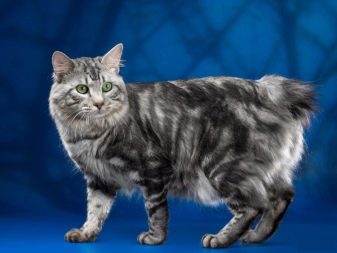

Bramble
This breed is the youngest since it was bred in 2000. It got its name thanks to its creator - Harry Bramblet. These beautiful cats of intricate marble color were obtained in the course of crossing Bengals and Pieterbolds with a brush color. For this reason, individuals have a Bengal-type coloring, and at the same time, the coat looks like a hard wire, while remaining soft and soft to the touch.

Until now, this variety is considered experimental and is very rare.
Devon rex
These unusual animals also come in marble. It should be noted that this breed was the result of a random mutation. Along with all other curly seals, the Devon Rex, with its behavior, resembles a cross between a dog, a cat and a monkey. Such cats are distinguished by their cheerful character, they are very energetic and active. The irrepressible energy in them is combined with love, a sharp mind and gullibility.

Of course, these are far from all breeds, whose representatives can have a chic marble color. They also include the following varieties:
- kimrick;

- laperm;
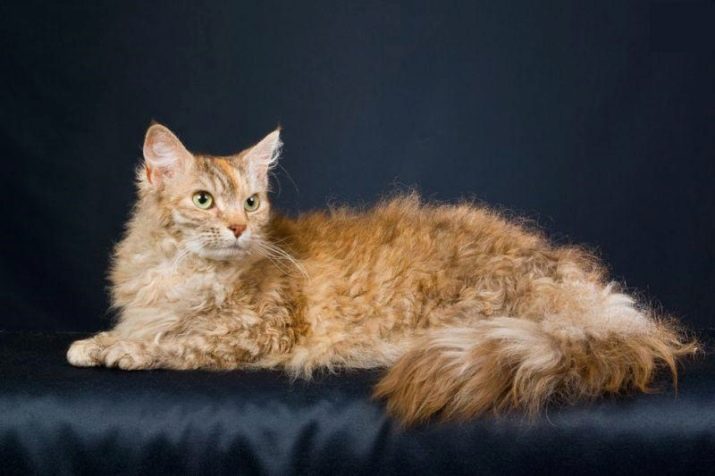
- Japanese, Kuril and Karelian bobtails;

- lemkin;
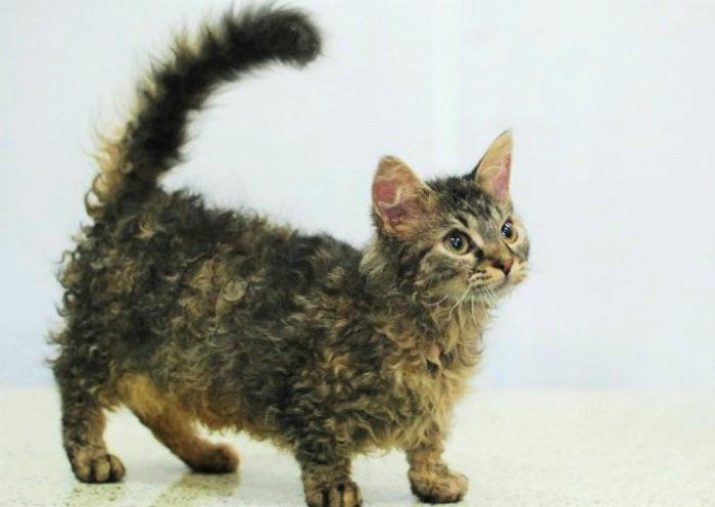
- cute munchkin with short legs;

- manx;

- large maine coon;

- norwegian longhaired;

- oriental breed and many others.

Possible problems
Breeders who specialize in breeding attractive marbled kittens of the British, Scottish, Bengal and other breeds very often face all sorts of problems, due to which, as a result, a color can be obtained that does not at all meet all existing standards.
Most often, breeders are faced with such problems.
- Expressiveness... With this problem, there is too much contrast between the print and the background on the skin of the cat.
- Shading... If there is such a defect, then the color of the animal will look discolored, as if the marble is very worn out.
- Excessive pattern width. In this case, the background color is practically invisible through the drawings on the wool - this color is not considered the norm.
- Excessive ticking. This ailment is externally manifested by a strong blurring of the pattern, which should still be more noticeable and expressive.
- The so-called torn pattern. With this problem, the stripes on the skin of the animal may look torn or even turn into specks of different sizes.

It should be noted that the original marble coloration may not only belong to purebred individuals. Similar colors are characteristic of the courtyard baleen.
For the marbled Bengal cat, see the video below.
